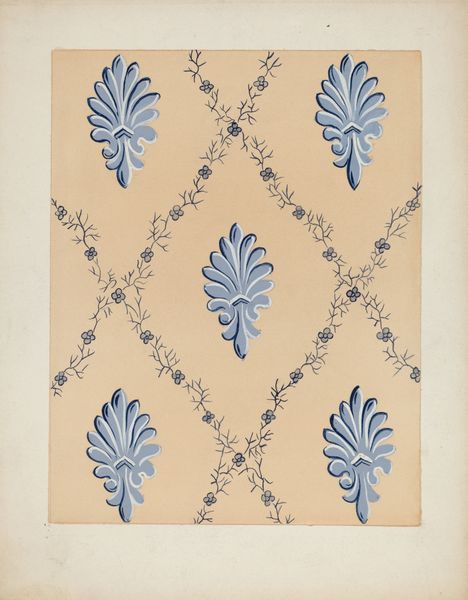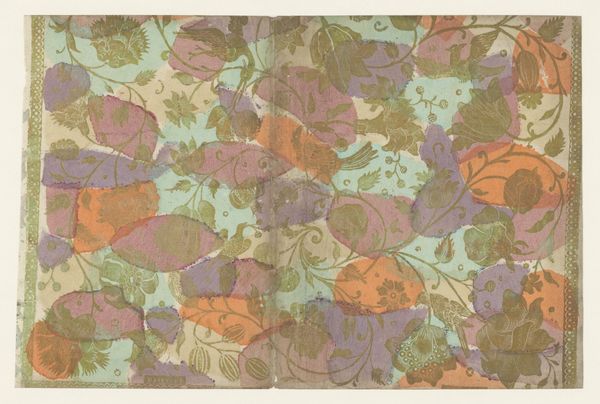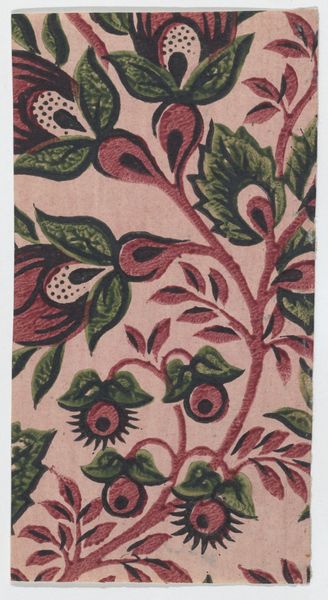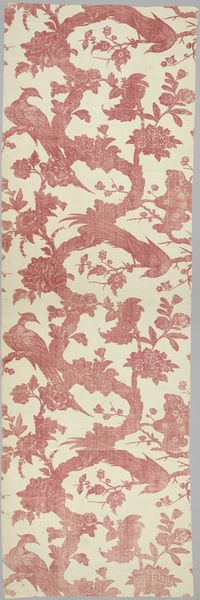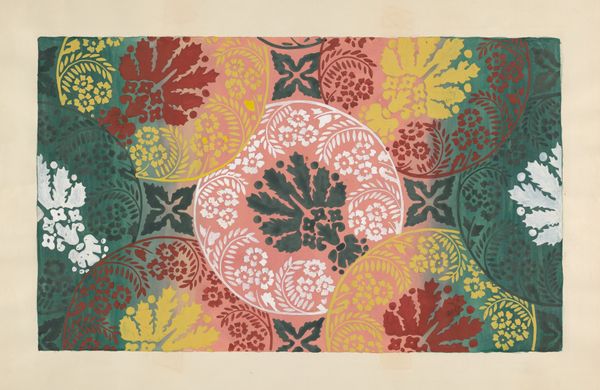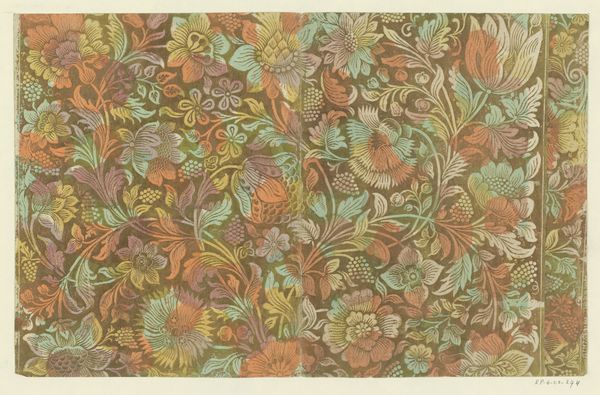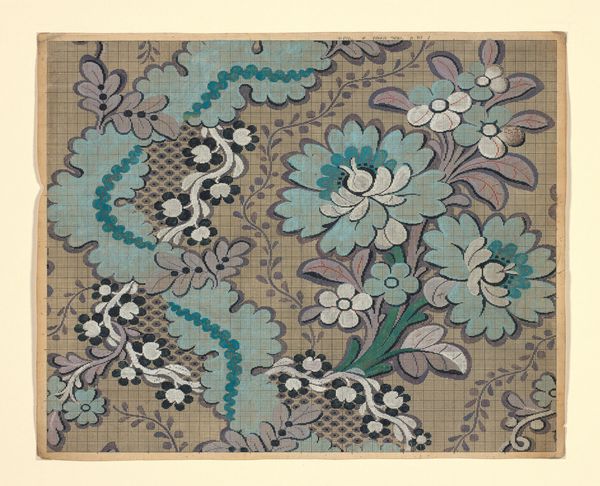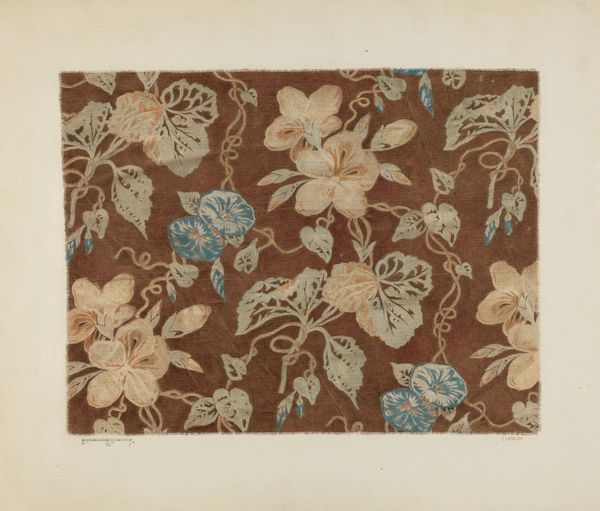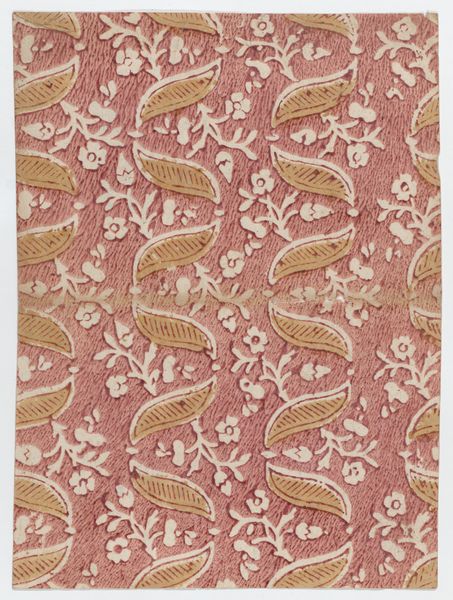
drawing
#
drawing
#
water colours
#
decorative-art
#
watercolor
Dimensions: overall: 35.2 x 27.3 cm (13 7/8 x 10 3/4 in.) Original IAD Object: 25" long; 21 1/2" high
Copyright: National Gallery of Art: CC0 1.0
Curator: Before us is a watercolor drawing by Joseph Rothenberg, dating from about 1937, titled "Wall Paper." Editor: My first thought is how much the cool tones give a sense of calm, but the organic pattern also suggests a latent energy, doesn't it? Curator: It's interesting to think of this work within the broader context of design in the 1930s. Wallpaper became increasingly accessible, and its aesthetic power in shaping domestic space gained greater cultural recognition. Here we can examine how art became enmeshed with daily life. Editor: And thinking of the wallpaper itself, the technique used with watercolor. You know, the artist had to have controlled that bleeding pigment quite meticulously to get those crisp lines around the main forms while allowing a delicate texture in the background, the mark of craft, a pattern meant for mass reproduction born of close, attentive labor. Curator: The design strikes me as deliberately ambiguous, caught between abstraction and nature, much like many public works from this period which often incorporated abstracted forms into more conventional artistic elements. Editor: Agreed, this in-betweenness has social dimensions; by utilizing accessible naturalistic forms rendered using more avant-garde stylings it treads the line between 'high' and 'low' culture, creating accessibility but while offering an unexpected visual engagement in familiar, quotidian space. It is after all an image that’s meant to fill someone’s field of vision within a domestic setting. Curator: And what impact would such design choices have on the consumer? I believe Rothenberg may be hinting at larger themes. Perhaps a veiled comment on consumerism during the Great Depression? Or the tension between our human-made environments and nature? Editor: Or simply… decorative taste. The confluence of all these forces you described shaped and created this wallpaper. So it becomes imperative to really investigate the role labor and materials play in shaping aesthetic experience. Curator: A compelling point. Certainly an aesthetic object can carry and create an active tension, and in this instance it's a push and pull between design and accessibility that continues to invite contemplation and reassessment. Editor: I agree entirely; to understand "Wall Paper", one really has to acknowledge this complicated matrix of creation, consumption, material and technique that shapes not just its formal identity, but how such designs impact their viewer.
Comments
No comments
Be the first to comment and join the conversation on the ultimate creative platform.

